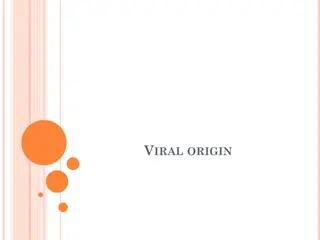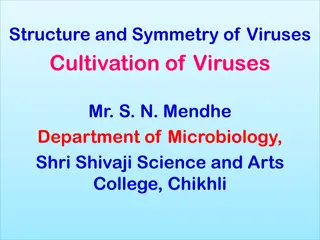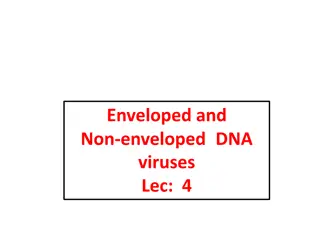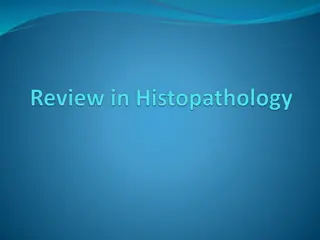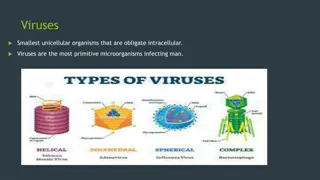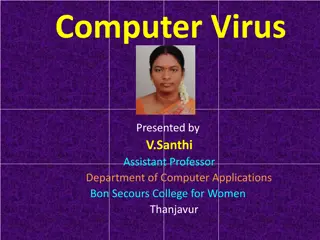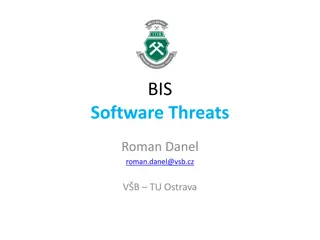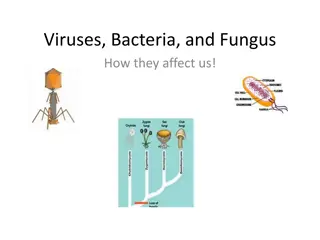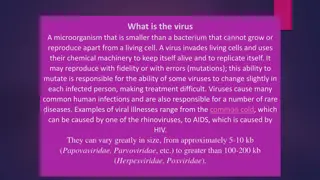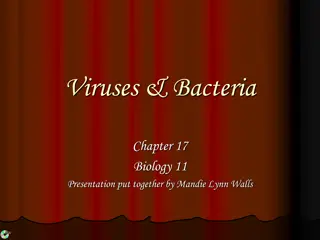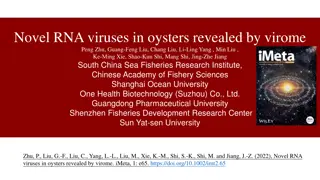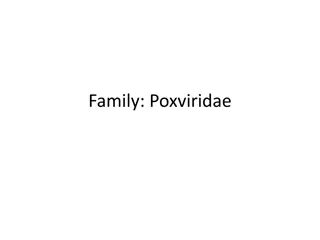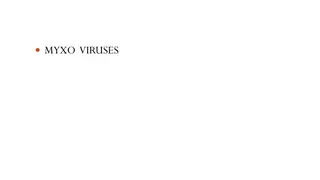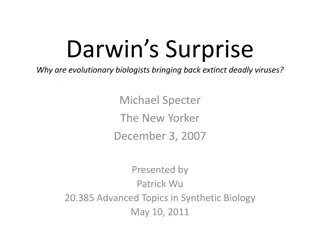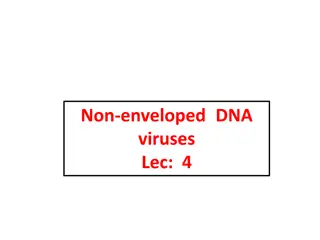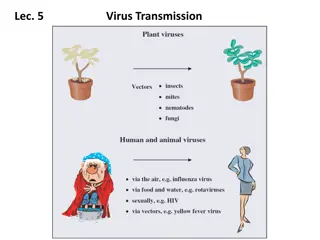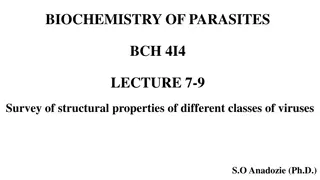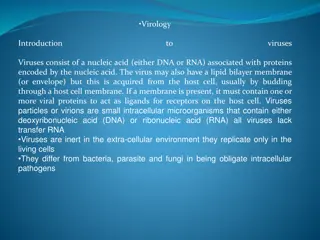Understanding Viruses, Viroids, and Prions: A Comprehensive Overview
Explore the fascinating world of viruses, viroids, and prions, from their discovery to their genetic material and hosts. Learn about the structure, genome, and sizes of viruses, as well as their interactions with different host cells. Gain insights into these acellular disease-causing agents and their unique characteristics.
Download Presentation

Please find below an Image/Link to download the presentation.
The content on the website is provided AS IS for your information and personal use only. It may not be sold, licensed, or shared on other websites without obtaining consent from the author. Download presentation by click this link. If you encounter any issues during the download, it is possible that the publisher has removed the file from their server.
E N D
Presentation Transcript
Discovery of Viruses Beijerinck (1897) coined the Latin name virus meaning poison He studied filtered plant juices & found they caused healthy plants to become sick
Introduction Viruses, viroids, and prions Acellular (noncellular) Disease-causing agents Lack cell structure Cannot metabolize, grow, reproduce, or respond to their environment. They must recruit the cell's metabolic chemicals and ribosomes in order to increase their numbers
Viruses A virus is a miniscule, acellular, infectious agent It has one or several pieces of nucleic acid -either DNA or RNA, but never both. Viruses have no cytoplasmic membrane, and with one exception lack organelles and cytosol. In its extracellular state, a virus is called a virion. It consists of a protein coat, called a capsid, surrounding a nucleic acid core. Together the nucleic acid and its capsid are called a nucleocapsid. Some virions have a phospholipid membrane called an envelope surrounding the nucleocapsid. When a virus penetrates a cell, the intracellular state is initiated; the capsid is removed. A virus without a capsid exists solely as nucleic acid but is still referred to as a virus.
Genetic Material of Viruses The genome of viruses includes either DNA or RNA, but never both. In addition, they may be double-stranded (ds) or single-stranded (ss). Thus, viral genomes are described as dsDNA, ssDNA, dsRNA, or ssRNA . They may exist as multiple linear molecules of nucleic acid, or circular and singular molecules of nucleic acid, depending on the type of virus. Viral genomes are usually much smaller than the genomes of cells. The smallest chlamydiaI bacterium has almost 1000 genes; the genome of bacteriophage MSZ has only three genes.
Hosts of Viruses Most viruses infect only particular kinds of cells. This specificity is due to the affinity of viral surface proteins or glycoproteins for complementary proteins or glycoproteins on the surface of the host cell. A virus that infects bacteria is referred to as a bacteriophage, or simply a phage. Viruses also infect humans, other animals, plants, and even fungi.
Sizes of Viruses Viruses are so small that most cannot be seen by light microscopy. The smallest have a diameter of 10 nm, whereas the largest are approximately 400 nm, about the size of the smallest bacterial cell.
Viroids Theodor Theodor Diener An acellular particle meaning virus-like. Viroids Viroids consist only of a short strand of circular RNA capable of self-replication. Unlike viruses, viroids do not have a protein coat to protect their genetic information. Diener discovered Viroids Viroids In 1971
Viroid Diseases Potato tuber spindle disease Potato tuber spindle disease, which causes slower sprouting and various deformities in potato plants Tomato planta macho viroid ( Tomato planta macho viroid (TPMVd tomato plants, which causes loss of chlorophyll, disfigured and brittle leaves, and very small tomatoes, resulting in loss of productivity in this field crop. Avocado Avocado sunblotch sunblotch viroid ( viroid (ASBVd lower yields and poorer-quality fruit. ASBVd is the smallest viroid discovered that infects plants. TPMVd) ) infects ASBVd) ) results in
Prions Prions are infectious proteins In 1982, Stanley Stanley Prusiner Nobel Prize in Physiology or Medicine in 1997.) Proteins are acellular hence . Do not contain DNA or RNA. Prusiner, a medical doctor discovered prions prions (received the 14
Prions A prion is a misfolded rogue form of a normal protein (PrPc). PrPsc may be caused by a genetic mutation or occur spontaneously PrPsc can be infectious, They can stimulate other endogenous normal proteins to become misfolded.
Prion Diseases Prions cause various forms of transmissible spongiform encephalopathy (TSE) in human and animals. TSE affects the brain and nervous system. It causes the brain tissue to become sponge-like Kills brain cells Forms holes in the tissue Leads to brain damage, loss of motor coordination, and dementia. Infected individuals are mentally impaired and become unable to move or speak. There is no cure, and the disease progresses rapidly, eventually leads to death. There is no cure, and the disease progresses rapidly, eventually leads to death.
TSEs in humans include kuru Straussler Straussler- -Scheinker Scheinker disease TSEs in animals include mad cow disease and chronic wasting disease chronic wasting disease (in elk and deer). kuru, fatal familial insomnia fatal familial insomnia, Gerstmann disease, and Creutzfeldt Creutzfeldt- -Jakob disease Gerstmann- - Jakob disease. mad cow disease, scrapie scrapie (in sheep and goats), TSEs can be transmitted between animals and from animals to humans by eating contaminated meat or animal feed.


